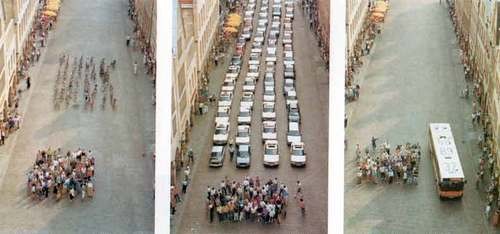What is decongestion pricing, anyway?

I-395 by the author.
This article was first published on April 18, 2019. As the conversation around congestion pricing continues to evolve we wanted to share this article again.
New York City is on track to be the first city in the country to implement decongestion pricing. This raises the prospect that other areas, such as the Washington region, might follow in New York’s footsteps.
If you’re wondering what exactly decongestion pricing is and what it might look like in our region, here’s a primer.
What is Decongestion Pricing?
Decongestion pricing (also called congestion pricing—it’s the same thing) institutes fees on automobiles entering a part of the city with a lot of traffic, usually the central business district. The fees aim not only to reduce congestion itself, but also to improve air quality and increase funds for other modes of transportation, such as transit.
How does it work?
Many cities use license plate recognition systems and charge the driver when they enter the cordon, which is the part of the city using the congestion pricing regimen. In the case of New York City, congestion pricing technology will likely build upon E-ZPass. New technologies, such as those promoted by the urban transportation tech NUMO Alliance, also may use a cell phone-based approach in the future.
How much does it cost?
Some cities use flat fees for any automobile entering the cordon, but dynamic pricing, similar to Virginia’s I-495 tolls, is also an option. Although the pricing has not been finalized, tolls to enter the cordon in New York City will probably be more than $10 per vehicle.
Congestion tolls themselves generate revenue. In the case of New York, the figure should be about $1 billion annually. Here and in other cities, the tolling revenue then goes towards funding transit. Congestion charges often only apply to the workweek during normal business hours.
Where does decongestion pricing exist?
New York follows cities such as Singapore, London, and Stockholm in implementing a decongestion pricing scheme. Singapore, in particular, is a pioneer in congestion pricing. Its original tolling system goes back to 1975. Congestion pricing has shown strong results in reducing traffic and air pollution in these cities.
Within cities, the cordon usually more or less coincides with the central business district. In New York, this will include all of Manhattan south of 60th Street. Stockholm, in particular, has a particularly large cordon that spans 13 square miles.
Does everyone have to pay?
No. In the case of Stockholm, buses, police and emergency vehicles, vehicles registered to people with disabilities, diplomatic cars, foreign cars, and hybrid cars are exempt from paying the charge, which adds up to 30% of all vehicles.
While there are completely valid reasons for some vehicles not to pay the charges, in New York some are worried that if too many groups have exemptions, the charge will not be effective.
Who will it help? Who will it harm?
People who commute by some means other than a car could benefit from improved transit and air quality. Although drivers would pay more, they likely would spend less time sitting in traffic or take other modes, which would likely make them happier and healthier.
In Singapore, the congestion prices have mostly affected the wealthy, since they are the ones who drive the most in that country. That might not entirely be the case in our region. In contrast, less traffic and less air pollution might have exacerbated gentrification in central London by making it even more desirable, raising prices and pushing lower income families to the periphery.
I already pay taxes on gasoline. Is this a double charge?
No. Gasoline taxes help pay for road maintenance (sort of), whereas congestion pricing is really a fee for using space.
In cities, and particularly in central business districts, space is a valuable asset. In comparison to other modes of travel, cars take up more space, making them relatively inefficient compared to every other mode of transportation.
Image by Photo by the Münster planning office.
More space for cars means less space for offices, housing, and other amenities, so unless we are willing to dedicate more of our city to roads (not a great idea with a housing crunch and climate change), more automobile traffic is difficult to accommodate.
Road congestion is a particular problem as well, since car mileage is at an all-time high, and adding more lanes of road is unlikely to solve the traffic jams.
Doesn’t the Home Rule Act prohibit tolls in DC?
No. As GGWash founder David Alpert explained, the ‘commuter tax’ in the Home Rule Act actually refers to taxing non-resident income. Nothing in the act prohibits a congestion charge.
Would a congestion charge work for our region?
Although Sustainable DC has recommended studying decongestion pricing, Joe McAndrew from the Greater Washington Partnership points out that no plan has seriously been considered yet. In order to truly understand if and how decongestion pricing would work for our region, we will have to start by studying it.
Stay tuned for more about what it would take to make decongestion pricing work in our region.
